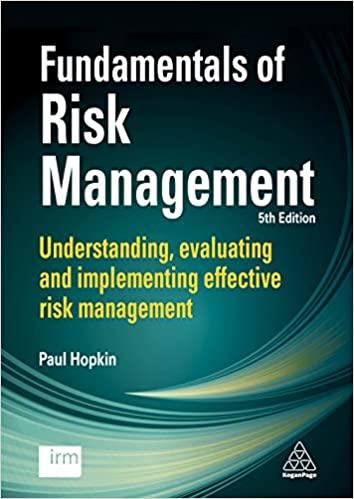Question
From the Case Study need help with below list 1. Quality Management Plan a. Stakeholder identification b. Verification activities identification c. Validation activities identification d.
From the Case Study need help with below list
1. Quality Management Plan a. Stakeholder identification b. Verification activities identification c. Validation activities identification d. Quality Review process plan 2. Design Document a. Executive Summary b. Detailed Class Diagram. c. Interface Designs d. Activity Diagrams e. Sequence Diagrams
Case Study: Virtual Research Collaboration Platform: Academic institutions worldwide are seeking to enhance collaborative research endeavors by developing a virtual research collaboration platform. The platform aims to streamline research activities, foster interdisciplinary collaboration, and facilitate knowledge exchange among researchers. The key functionalities include modules for project management, collaboration tools, data sharing, analytics, and publication management. Platform Requirements: The virtual research collaboration platform shall encompass the following modules and functionalities:
Module 1: Project Management The project management module focuses on efficient planning, execution, and monitoring of research projects. Key functionalities include:
Required Functionalities: 1. Project creation and customization. 2. Task allocation and progress tracking. 3. Integration with calendar and milestone setting. 4. Resource allocation and budget management. 5. Real-time collaboration and communication tools for project teams.
Recommended Functionalities: 1. Advanced analytics for project performance evaluation. 2. Integration with external project management tools. 3. Customizable project templates for different research domains.
Module 2: Collaboration Tools This module emphasizes seamless communication and collaboration among researchers. Key functionalities include:
Required Functionalities: 1. Document sharing and version control. 2. Discussion forums and real-time messaging. 3. Video conferencing and virtual meeting rooms. 4. Collaborative editing and annotation of research documents. 5. Integration with existing institutional email systems.
Recommended Functionalities: 1. Integration with popular collaboration platforms (e.g., Slack, Microsoft Teams). 2. Automated notifications for project updates and discussions. 3. Integration with academic social networks.
Module 3: Data Sharing and Analytics This module focuses on secure and efficient data sharing among researchers and incorporates analytical tools for insights. Key functionalities include:
Required Functionalities: 1. Secure data storage and sharing. 2. Versioned data repositories with access controls. 3. Data analytics tools for basic analysis. 4. Support for common data formats.
Recommended Functionalities: 1. Integration with external data visualization tools. 2. Advanced analytics and machine learning capabilities. 3. Research impact metrics and citation tracking.
Module 4: Publication Management The publication management module streamlines the process of submitting, reviewing, and publishing research findings. Key functionalities include:
Required Functionalities: 1. Online manuscript submission and tracking. 2. Peer-review management. 3. Automated notifications for publication milestones. 4. Integration with academic publication databases.
Recommended Functionalities: 1. Integration with reference management tools. 2. DOI assignment and CrossRef integration. 3. Collaboration with reputable journals for streamlined submission.
Quality Requirements: The platform should adhere to the following quality requirements: 1. Scalability - the ability to accommodate a growing number of research projects and users. 2. Security - robust measures to protect sensitive research data and intellectual property. 3. User Experience - an intuitive and user-friendly interface to ensure easy adoption. 4. Integration - compatibility with existing academic systems and tools. Other Requirements and Remarks: Efforts should be made to facilitate interoperability with institutional systems and external research databases. The platform should comply with ethical standards and data protection regulations governing academic research.
Step by Step Solution
There are 3 Steps involved in it
Step: 1

Get Instant Access to Expert-Tailored Solutions
See step-by-step solutions with expert insights and AI powered tools for academic success
Step: 2

Step: 3

Ace Your Homework with AI
Get the answers you need in no time with our AI-driven, step-by-step assistance
Get Started


